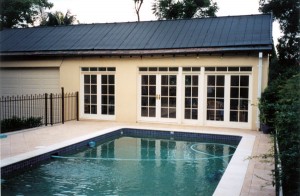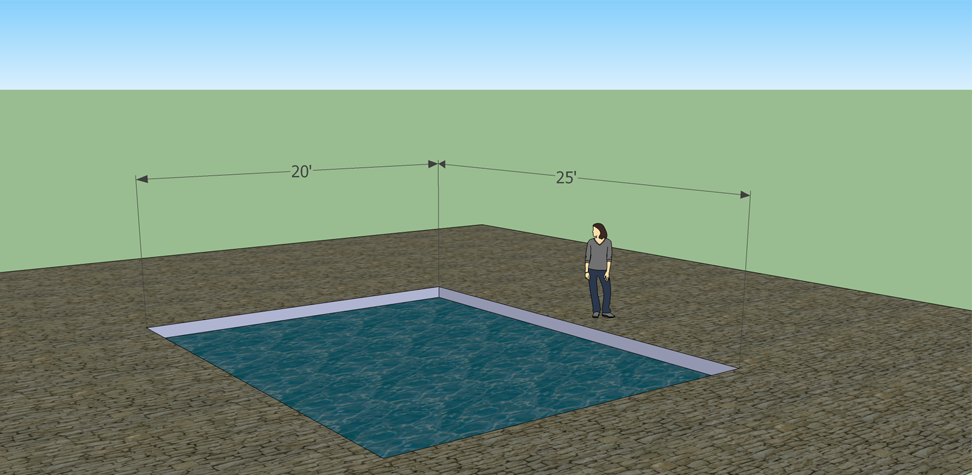Guide to Properly Sizing Your Solar Pool Heater

Sizing a solar pool heater is something of an art, as well as science. There are many factors to consider. The size of the pool, the orientation of the solar collectors, shading over the pool, the climate of the installation, all come in to play. A good starting point for sizing the pool heater is take 70% of the pool surface area equals the SF of solar collectors you will need. For instance, on a 500 SF pool, multiply x .70 = 350 SF of solar collectors. Since 90% of the heat loss in a pool is due to the evaporation of water at the surface, we use the surface area of the pool, not the number of gallons in the pool, to size the system. Now, the exact need will vary based on the climate and location of the installation, as well as the desired temperature rise.
If you live in the sunbelt from Florida through Texas to southern California and have a good roof with southern exposure, 70% – 80% sizing is optimal and will result in at least a 10-15 degree temperature rise, and typically doubles or triples the swimming season.
Sizing in Cold Climates
In colder climates, the swimming season is shorter. Even if your pool was 80 degrees year round, you likely won’t want to take a dip when it’s 30 degrees outside. It may be counter intuitive, but for this reason a northern pool usually requires fewer solar pool heating panels. To boost the pool temperature during the summer months and extend the season by 2 months, 50-60% coverage is a good start.

This 500 SF pool should have 350 SF of panels to achieve 70% coverage. Which means 7 panels, 50 SF each.
Indoor Pools, Non South Facing-roofs, and Tree Coverage
If you have a pool that is indoor, you will want to add about 20% to the sizing, since the sun cannot directly hit the pool surface and heat it up. The same 20% rule of thumb goes for pools that are completely in the shade, or if the panels must go on a roof that faces more north than south. If you have all three challenges, then you should try to put as many collectors as you can fit, up to 120% coverage of the pool surface area
Quick guide
- 50%-60% coverage – pools in cold climates where summer pool temps are boosted
- 70%-80% coverage – pools in cold climates with shading,non optimal southern exposure, or indoor pools
- 70%-80% coverage – pools in sunny or warm climates
- 80%-100% coverage – pools in sunny climates with shading, non optimal southern exposure, or indoors
- 100%+ coverage – pools in warm climates that are indoors and have less than optimal southern roof exposure and the desire is to extend the swimming season as much as possible.
